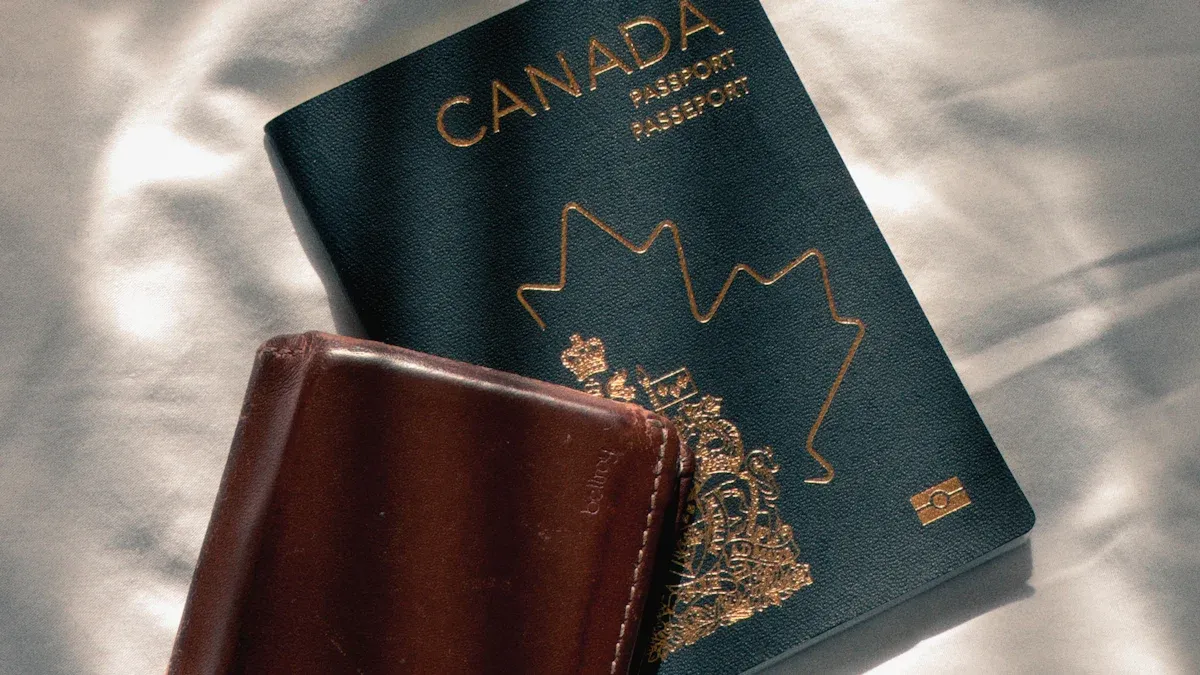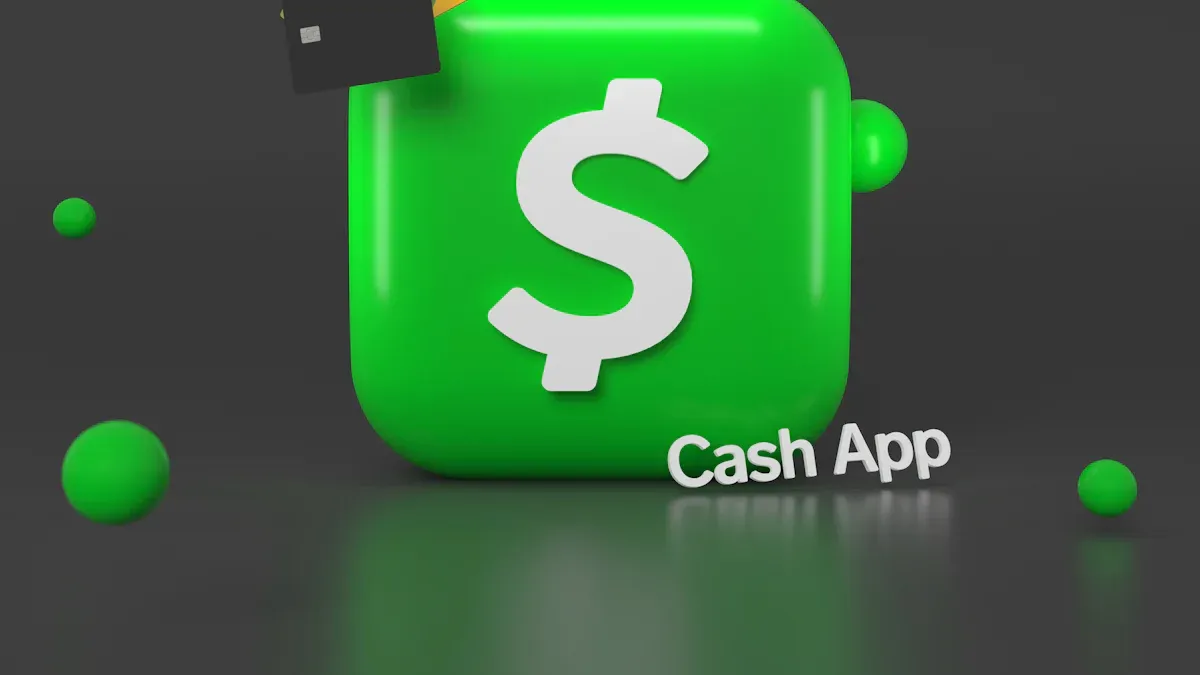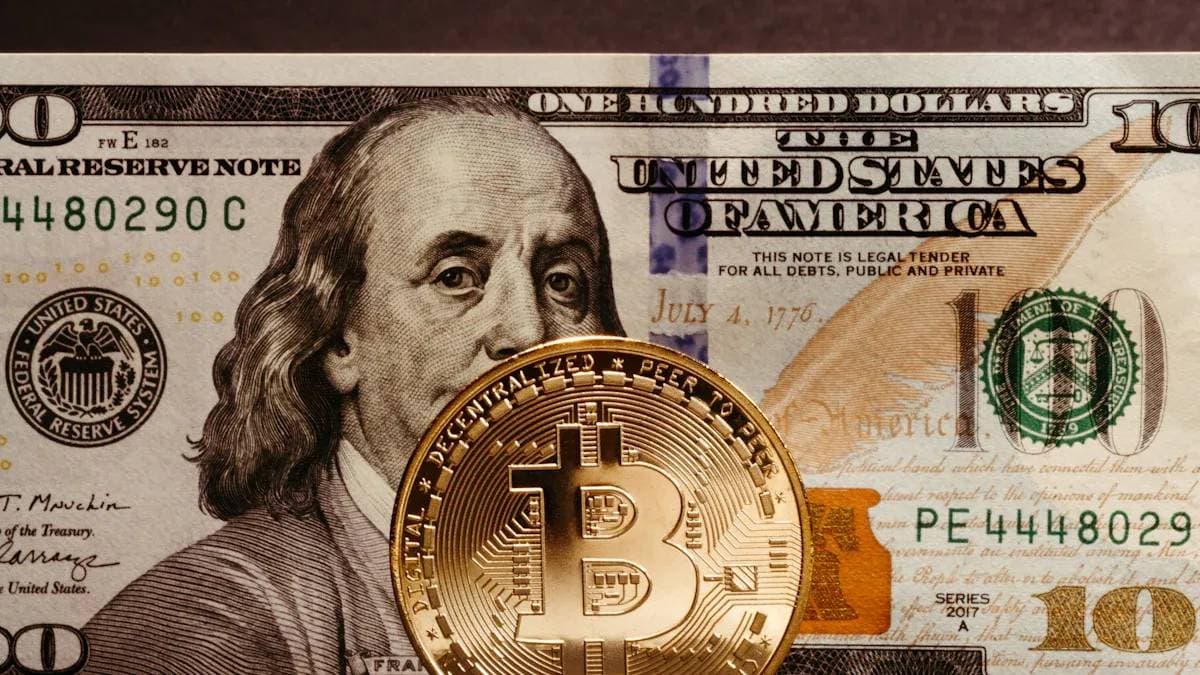- EasyCard
- Trade
- Help
- Announcement
- Academy
- SWIFT Code
- Iban Number
- Referral
- Customer Service
- Blog
- Creator
Can Cash App be used in Canada?

Image Source: unsplash
You may be wondering if Cash App is available in Canada. The direct answer is: it is not fully launched here. This app has over 57 million active users in the United States, but its service focus is not on other regions in North America, so Canadian residents cannot enjoy its full features like American users.
However, this does not mean you cannot use it at all. In specific situations, such as making cross-border transfers from Canada to the United States, or if you already have a U.S. account, you can still use some of its functions.
Key Takeaways
- Cash App cannot be fully used in Canada; it primarily serves the United States and the United Kingdom.
- Canadian residents cannot register a full Cash App account because it requires a bank card and identity proof from the U.S. or U.K.
- You can use Cash App to transfer money from Canada to friends in the U.S., but you need a U.S. bank card.
- For domestic transfers in Canada, it is best to use Interac e-Transfer or Wealthsimple Cash.
- If you need to remit money from Canada to the U.S., Wise is a better choice than traditional banks with lower fees.
Cash App’s Official Status in Canada

Image Source: unsplash
To understand why you cannot use Cash App as freely as your friends in the U.S., you first need to know its official service status. Simply put, Cash App does not consider Canada as its core service area.
Service Scope Restrictions
Cash App’s primary markets are concentrated in the United States and the United Kingdom. This means all its features are designed around the user needs and banking systems of these two countries. If you try to use it in Canada, you will encounter fundamental obstacles.
- Account Registration Restrictions: To register and use Cash App, you must have a debit card issued in the U.S. or U.K..
- Identity Verification Requirements: To unlock all features and remove transfer limits, you need to prove you are a legal resident of the U.S. or U.K. This usually requires providing a U.S. Social Security Number (SSN) or similar documents.
Due to these restrictions, ordinary Canadian residents cannot complete account setup and naturally cannot use its core functions like transfers, receipts, or investments.
Financial Regulatory Challenges
Another key reason is that Canada has an independent and strict financial regulatory system. Any fintech company wanting to offer services here must comply with complex regulations.
FINTRAC Compliance Requirements
The Financial Transactions and Reports Analysis Centre of Canada (FINTRAC) is responsible for enforcing anti-money laundering and anti-terrorist financing laws. This means companies like Cash App must meet the following core requirements to operate in Canada:
- Customer Due Diligence (CDD): Your identity must be verified before processing any transactions.
- Suspicious Transaction Reporting (STR): Any suspicious transaction activity must be reported to FINTRAC.
- Record Keeping: All transaction data must be securely stored for at least five years.
Building a system that fully complies with these localized regulations requires significant time and resources, which is one of the main reasons many international financial apps enter the Canadian market slowly.
Specific Canadian Use Cases for Cash App
Although Cash App is not fully operational in Canada, in certain specific situations, you can still utilize some of its functions. Understanding these scenarios can help you determine if it meets your particular needs.
Cross-Border Transfers from Canada to the U.S.
This is one of the most useful hidden features of Cash App for Canadian users. If you need to transfer money from Canada to a recipient in the U.S., Cash App provides a viable channel.
To achieve this, you need to meet the following conditions:
- Use a U.S.-Issued Card: You must have a debit or credit card issued by a U.S. bank to fund your Cash App account.
- Recipient Must Be in the U.S.: Your recipient must be a Cash App user residing in the United States.
In this way, you can initiate a one-way transfer from Canada to the U.S.
U.S. Users in Canada
If you are a Cash App user with a U.S. account and are temporarily staying in Canada, you might wonder if you can continue using it. The answer is no.
Cash App requires both parties to the transaction to be residents of its service areas (U.S. or U.K.). Even if you and your friend are both U.S. users, if you are both in Canada, the app’s functions will be limited. Additionally, according to official information, any Cash App features, such as using the Cash Card for shopping or withdrawing at ATMs, cannot be used outside the U.S..
Usage Restrictions and Risks
When attempting to use Cash App’s limited functions, you must clearly recognize its limitations and potential risks.
Core Restriction: Cannot Interact with Local Banking Systems
You cannot link Cash App to any Canadian bank account or credit card. This means you cannot use it to receive Interac e-Transfers from Canadian friends or directly withdraw balances to your Canadian bank account.
Most importantly, you should avoid registering an account by providing false addresses or using VPNs or other unofficial methods. Such behavior violates Cash App’s terms of service. Once discovered, your account may be immediately frozen, and the funds inside may be at risk of being unrecoverable.
Cash App Alternatives in Canada

Image Source: pexels
Since Cash App has limited functionality in Canada, what better options are available when you need to make domestic transfers or handle international remittances? Fortunately, Canada has a mature fintech ecosystem. Here are four of the most mainstream and reliable alternatives; you can choose based on your needs.
Interac e-Transfer
If you have a bank account in Canada, you have almost certainly encountered Interac e-Transfer. It is the gold standard for personal transfers within Canada, integrated by almost all banks and credit unions.
Its popularity is astonishing. Data shows that in the 12 months ending April 2022 alone, Interac e-Transfer processed over 1 billion transactions with a total value of $338 billion CAD. This is enough to prove its core position in daily life.
Interac itself does not charge users, but your bank may impose fees. The fee structure varies by financial institution; you need to check your bank’s policy.
- TD: Premium personal accounts are usually free; business accounts range from $0.50 to $1.50.
- RBC: Most personal chequing accounts are free; business accounts charge $1.50.
- CIBC: Some personal accounts are free; business accounts charge $1.50.
- Scotiabank: Some premium accounts are free; other accounts charge $1.00 per transaction.
In terms of security, Interac e-Transfer provides multi-layer protection for peace of mind.
- Advanced Encryption Technology: All transaction data is encrypted during transmission to prevent information leaks.
- Two-Factor Authentication (2FA): The system requires identity verification through two methods, increasing account security.
- Secure Communication Channels: Information exchange between banks occurs through encrypted channels to ensure data is not tampered with.
Wealthsimple Cash
If you are looking for a modern peer-to-peer (P2P) payment app more like Cash App, Wealthsimple Cash is an excellent choice. It allows you to instantly send and receive money to friends and family without any fees.
This app is perfect for splitting bills with friends or small transfers. Its transfer limits are also quite generous, meeting most daily needs:
- Peer-to-Peer Transfer Limits: Up to $5,000 daily and $20,000 monthly.
- Cash Card Spending Limits: Up to $10,000 daily.
- ATM Withdrawal Limits: Up to $1,000 daily.
Its simplicity and zero-fee model make it a popular choice among young people and tech enthusiasts.
PayPal
PayPal is a globally renowned payment platform with a broad user base in Canada. It is not only suitable for online shopping but also for transfers between individuals.
When using PayPal for domestic transfers, pay attention to its fee structure:
- Free: Transferring to family and friends using your PayPal balance or linked bank account is free.
- Charged: If you choose to fund the transfer with a credit or debit card, PayPal charges 2.9% + $0.30.
Although its fees may be higher than other options, PayPal’s advantages lie in its wide acceptance and strong buyer protection policies, making it especially suitable for transactions involving goods or services with strangers.
Wise
If your primary need is cross-border transfers between Canada and the U.S., Wise (formerly TransferWise) is currently the best choice on the market. It focuses on providing low-cost, transparent international remittance services.
Wise’s core advantage is using the mid-market exchange rate and charging only a small, disclosed fee. This is usually much cheaper than traditional bank wire transfers.
For example, when remitting from Canada to the U.S., the fee structure is very clear:
| Item | Amount/Rate |
|---|---|
| Exchange Rate (1 CAD) | 0.714005 USD (mid-market rate) |
| Transfer Fee | 7.41 CAD |
| After sending 1,000 CAD, recipient receives | 708.71 USD |
Additionally, Wise’s transfer speed far exceeds traditional banks. Traditional wire transfers may take 1 to 5 business days, while some Wise transfers can reach the recipient’s account in minutes*.
*Transfer speed depends on various factors, including fund availability, verification processes, and the operating status of partner banking systems.
In summary, Cash App is not completely unusable in Canada, but its functions are mainly limited to cross-border transfers to U.S. users.
For domestic transfers in Canada, your best choices remain localized tools. Interac e-Transfer is the mainstream payment method supported by almost all banks, while Wealthsimple Cash provides a modern free P2P experience.
Ultimately, your choice depends on your core needs. If your goal is remitting to the U.S., services like Wise usually offer more economical solutions than traditional banks, with potentially significant fee differences.
FAQ
Can I Really Use Cash App in Canada?
You cannot use it fully like U.S. users. Cash App is not fully operational in Canada, and you cannot register a standard account. Its main use is limited to specific types of cross-border transfers from Canada to U.S. users.
How Can I Use Cash App to Remit from Canada to the U.S.?
You need a U.S.-issued bank card to fund your Cash App. Then, you can initiate a transfer to any Cash App user in the U.S. Remember, the recipient must be within the U.S.
Can I Link Cash App to My Canadian Bank Account?
No. Cash App does not support linking to any Canadian bank accounts or credit cards. You cannot use it for local receipts or withdrawals, nor interact with Interac e-Transfer.
What Are the Best Cash App Alternatives in Canada?
- Domestic Transfers: Interac e-Transfer is the most popular choice. Wealthsimple Cash provides a modern free P2P payment experience.
- Cross-Border Remittances: For transfers to the U.S., Wise is usually cheaper and more transparent than traditional banks.
*This article is provided for general information purposes and does not constitute legal, tax or other professional advice from BiyaPay or its subsidiaries and its affiliates, and it is not intended as a substitute for obtaining advice from a financial advisor or any other professional.
We make no representations, warranties or warranties, express or implied, as to the accuracy, completeness or timeliness of the contents of this publication.




Contact Us
Company and Team
BiyaPay Products
Customer Services
BIYA GLOBAL LLC is a licensed entity registered with the U.S. Securities and Exchange Commission (SEC No.: 802-127417); a certified member of the Financial Industry Regulatory Authority (FINRA) (Central Registration Depository CRD No.: 325027); regulated by the Financial Industry Regulatory Authority (FINRA) and the U.S. Securities and Exchange Commission (SEC).
BIYA GLOBAL LLC is registered with the Financial Crimes Enforcement Network (FinCEN), an agency under the U.S. Department of the Treasury, as a Money Services Business (MSB), with registration number 31000218637349, and regulated by the Financial Crimes Enforcement Network (FinCEN).
BIYA GLOBAL LIMITED is a registered Financial Service Provider (FSP) in New Zealand, with registration number FSP1007221, and is also a registered member of the Financial Services Complaints Limited (FSCL), an independent dispute resolution scheme in New Zealand.



















